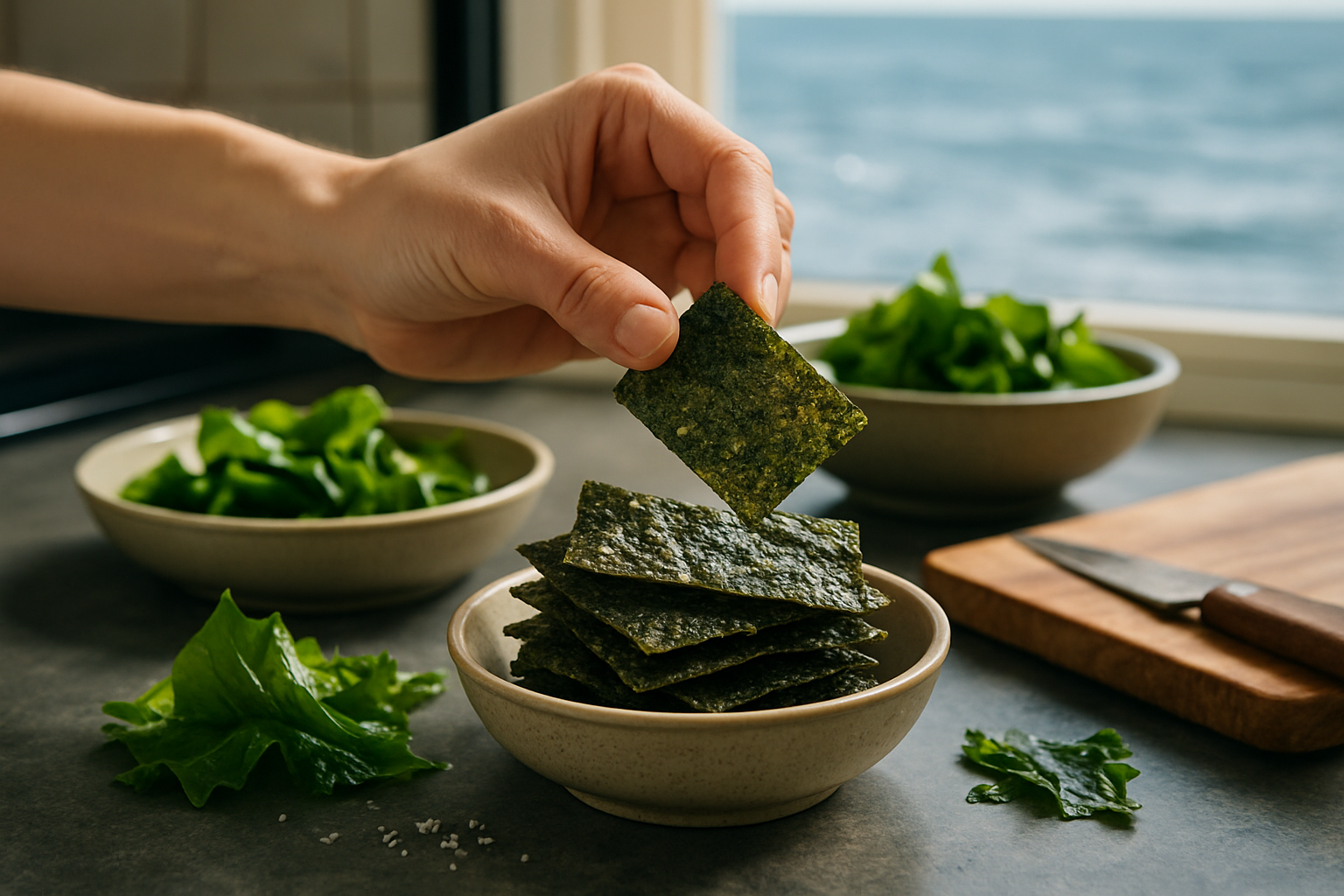Seaweed Snacks: The Ocean's Crunchy Gift to Culinary Innovation
Dive into the world of seaweed snacks, where ocean-fresh flavors meet crispy textures in a nutritious, guilt-free package. These marine morsels are taking the snack world by storm, offering a unique blend of umami taste and eco-friendly appeal. From nori sheets to kelp chips, seaweed snacks are making waves in kitchens and on-the-go lifestyles alike.

Nutritional Powerhouse from the Deep
Delving into the nutritional profile of seaweed snacks reveals a treasure trove of health benefits. These marine marvels are packed with essential minerals, vitamins, and antioxidants that are often lacking in land-based vegetables. Iodine, crucial for thyroid function, is abundant in seaweed, making it an excellent choice for those looking to support their metabolic health. The high fiber content aids digestion and promotes a feeling of fullness, perfect for mindful snacking. Omega-3 fatty acids, typically associated with fish, are also present in seaweed, offering heart-healthy benefits to vegans and vegetarians. Calcium, iron, and vitamins A, C, and E round out the impressive nutrient roster. What’s more, seaweed snacks are naturally low in calories and fat, making them an ideal choice for those watching their weight. The combination of nutrient density and low caloric impact has positioned seaweed snacks as a go-to option for health-conscious consumers looking to satisfy their cravings without compromising their dietary goals.
Culinary Applications Beyond Snacking
While seaweed snacks are delightful on their own, their potential in the kitchen extends far beyond solo consumption. Innovative chefs and home cooks are incorporating these briny delights into a variety of dishes, elevating flavors and adding textural interest. Crumbled nori sheets can be sprinkled over salads, adding a salty punch and crispy element to fresh greens. Seaweed flakes make an excellent seasoning for popcorn, offering a healthier alternative to traditional butter and salt. In baking, finely ground seaweed can be mixed into bread doughs or crackers, imparting a subtle oceanic flavor and boosting nutritional value. Seaweed snacks can also be used as a creative wrapper for sushi rolls or as a garnish for soups and stews. The umami-rich profile of seaweed makes it an excellent addition to vegetarian and vegan dishes, providing depth and complexity to plant-based meals. As home cooks become more adventurous, seaweed snacks are finding their way into unexpected creations, from seaweed pesto to kelp-infused energy bars.
Sustainability and Environmental Impact
The surge in popularity of seaweed snacks isn’t just good news for our taste buds and health; it’s also a win for the environment. Seaweed cultivation is one of the most sustainable forms of food production, requiring no fresh water, fertilizers, or arable land. These aquatic plants grow rapidly, absorbing carbon dioxide and excess nutrients from the water, effectively acting as a natural filter for our oceans. As concerns about overfishing and the environmental impact of land-based agriculture grow, seaweed farming offers a promising alternative. Many seaweed snack producers are committed to sustainable harvesting practices, working with local communities to ensure responsible cultivation and processing methods. This eco-friendly aspect of seaweed snacks appeals to environmentally conscious consumers, aligning with the growing demand for sustainable food options. By choosing seaweed snacks, consumers can enjoy a tasty treat while supporting a food system that benefits the planet.
Global Flavors and Cultural Fusion
The world of seaweed snacks is a testament to culinary globalization, blending traditional Asian ingredients with contemporary Western snacking habits. While countries like Japan, Korea, and China have long incorporated seaweed into their diets, the recent global popularity has led to exciting flavor fusions. American brands are experimenting with flavors like barbecue and sour cream, while European producers are infusing seaweed snacks with Mediterranean herbs. This cultural exchange is introducing consumers to new taste experiences and broadening palates worldwide. In health food stores and mainstream supermarkets alike, one can find seaweed snacks inspired by Thai tom yum soup, Mexican chili lime seasoning, or Italian truffle oil. This diversity not only caters to adventurous eaters but also helps integrate seaweed into various culinary traditions. As the market continues to evolve, we can expect to see even more innovative flavor combinations and cross-cultural interpretations of this versatile ingredient.
Seaweed Snack Tips & Facts
• Store seaweed snacks in an airtight container to maintain crispness.
• Try wrapping sushi rolls with seaweed snacks for an extra crunchy texture.
• Seaweed is one of the few plant-based sources of vitamin B12.
• Some varieties of seaweed contain more calcium than milk, by weight.
• Seaweed farming could potentially absorb up to 135 million tons of carbon per year.
• Crushing seaweed snacks makes for a great low-sodium seasoning alternative.
As we ride the wave of seaweed snack popularity, it’s clear that this oceanic treat is more than just a passing fad. With its impressive nutritional profile, environmental benefits, and culinary versatility, seaweed is poised to become a staple in pantries around the world. Whether you’re munching on nori chips during movie night or sprinkling kelp flakes on your morning avocado toast, seaweed snacks offer a delicious way to connect with the bounty of the sea. As we continue to explore the depths of marine cuisine, seaweed snacks stand as a testament to the endless possibilities that arise when we look to the ocean for culinary inspiration.





